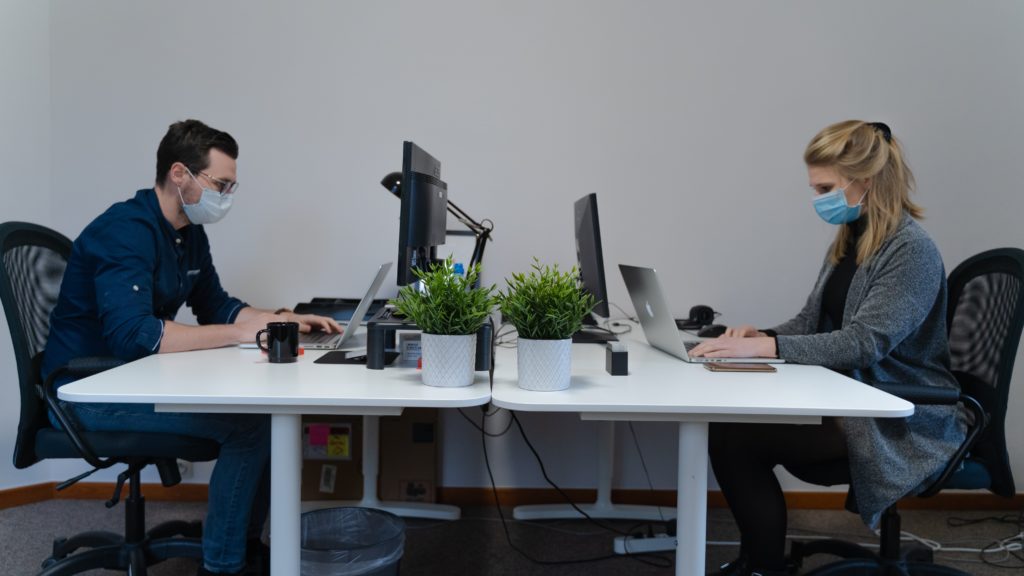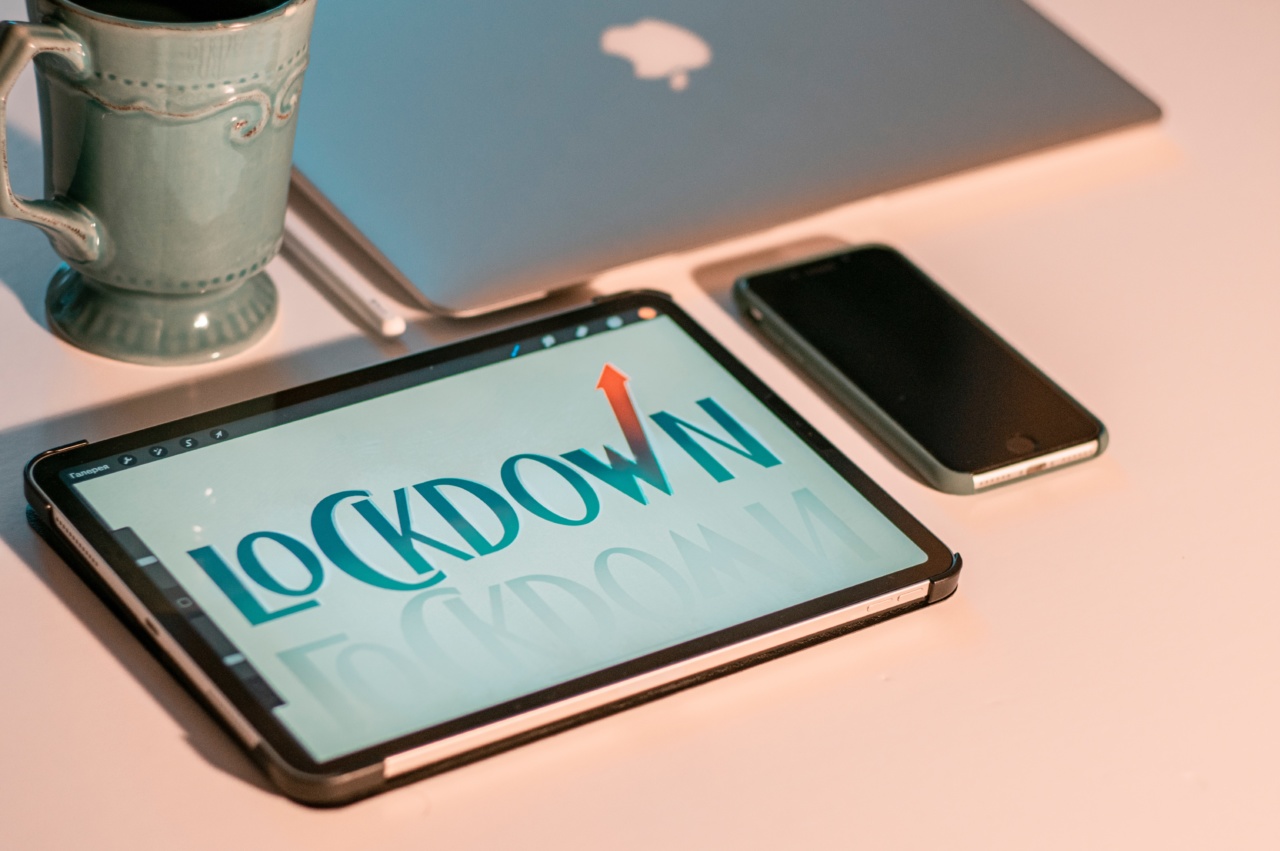Vaccine programs and low infection rates mean that employers are optimistic for a return to physical locations. The upcoming changes have caused some employees to suffer from a mental health phenomenon known as re-entry anxiety. How can internal communications support those returning after remote working?
The impact of the COVID-19 pandemic has changed lives and workplaces. The focus shifted to remote working, and internal communication professionals played an essential role in many businesses. Informing staff of government-mandated changes and developments, virtual mental health check-ins, and keeping the dispersed workforce united were new, unprecedented additions to the job description.
As countries across the world begin the easing of COVID-19 lockdown restrictions, it’s a mixed bag of emotions for many. Some are raring to get out and socialize, making reservations at their favorite restaurant and jumping at the chance to reunite with colleagues in the office environment. Others are more cautious, having adapted to life indoors and still concerned about transmitting the virus.
Employers should be aware of these various reactions to the transition back to normal. Employees need support and understanding, to avoid alienating those struggling with re-entry anxiety. Management of this situation by internal communicators needs to be careful and precise. Otherwise, they may exacerbate the effects of the pandemic on their employee’s already delicate mental health.
The effect of lockdown on mental health

Lockdown had an impact on both mental and physical health. Physical health worsened with reduced exercise, increased alcohol consumption, and posture issues caused by working from the sofa. With regards to mental health, many are reporting burnout, a lack of motivation, isolation, and increased anxiety. These symptoms potentially lead to long-term mental health issues that will impact the population for many years to come.
14 steps to great internal communications
With a return to normality on the cards, some people are finding it more challenging to adjust to the future. The uncertainty, mixed with a semi-complete vaccination program, is only acerbating the transition. Coping mechanisms designed at the beginning of lockdown, while initially helpful, become problematic over time. Some employees may need extra support as we emerge from the pandemic, particularly in the initial stages of reintegration.
A 2021 report from the American Psychological Association (APA) states that nearly 50% of Americans are anxious about returning to face-to-face interactions post-pandemic, including getting back to the workplace full time.
In the UK, a survey of more than 1,200 managers by the Chartered Management Institute (CMI) found that 62% of managers believe that returning to the office will impact employee wellbeing.
These studies highlight the importance for organizations to prioritize support as the general population emerges from quarantine. Many have already suffered from mental health problems during the lockdown, with parents and those who live alone particularly at risk.
What will the return to the office look like?

Globally, many employees are returning to some form of workplace normality. But the likelihood is that the office will appear very different from the one they left. COVID-secure policies have changed the look and feel of many work environments. Designated one-way systems guiding staff around buildings, hand sanitizer stations, and Perspex screens may all be new additions to protect those inside.
These measures will likely impact socialization within the office, and therefore, the employee experience could suffer. Some workers will be more comfortable than others about relaxing social distancing in meetings or at lunchtimes. There is no true universal approach on how to deal with the return to the office.
This diversity amongst transitioning employees leaves internal communication professionals with a vital job to do.
Employees may be excited to return to normal and get out of the house to socialize with their colleagues. Many of the older staff will have received at least one vaccination, so will feel less vulnerable to infection. Those who wanted to continue working from home full-time might feel demotivated and unproductive after being prompted back into the office. After being isolated and lonely for long periods, some might struggle with increased social interactions or become overwhelmed by external stimulation.
This diversity amongst transitioning employees leaves internal communication professionals with a vital job to do. It’s a challenge to manage the peaks and troughs of returning to work while avoiding alienating any staff. Encouraging supportive channels for those that need it requires an effective employee engagement strategy and a culture of communication.
Supporting employees through the transition

Employers have an essential role to play in managing the return to work. There are many significant areas to focus on; ensuring robust and transparent internal communications is critical. Support the mental health of all employees, particularly during the transitional period.
Offering coping mechanisms to make them less vulnerable to stress is a good long-term strategy that reduces presenteeism. Some may not take advantage of the support network, and others do not need it. The fact that the opportunity is available is what matters. There are other communication strategies to utilize too. Promote one-to-ones with managers to talk about any ongoing professional worries. Post stress-relieving tips on the company intranet, and be empathetic. Encourage colleagues to share their feelings with teammates or mental health first aiders if they feel overwhelmed.
For those worried about transmission, internally publishing the risk assessment undertaken to ensure a safe workplace will put wary minds at rest.
The act of reassuring staff allows them to step out of fear mode and reduces any re-entry anxiety. After all, the office is an unfamiliar environment now, even for long-serving employees. Public health messaging has reiterated for many months that these workplaces are unsafe and pose a risk of infection. So, it may be a gradual process to let go of those mental controls and coping mechanisms that have been adopted as a result of the pandemic.
14 steps to great internal communications
Take it slow. Open up internal communication channels and be patient with anyone who is struggling to adapt. This will allow staff to release feelings of anxiety and let go of disruptive thoughts. Simply talking about these issues helps sufferers feel less alone. For those worried about transmission, internally publishing the risk assessment undertaken to ensure a safe workplace will put wary minds at rest. Provide the appropriate information in an open forum to help ease employee anxiety. This transparency should alleviate most worries about potential health risks in the great office return.
The role of internal communications

It’s likely to be a mixed bag for HR teams and senior management as more and more employees start to return to the office. They’ll need to be diplomatic, strategic, and supportive within all internal communications. Some staff may still be working from home, particularly if the return is phased to avoid a full office. These workers will need to continue to be supported as much as the office-based staff.
Employees may also want increased workplace flexibility. Many are used to more accessible childcare or no commuting thanks to home working over the past eighteen months. Those who are unhappy with the new situation may leave, putting a strain on the recruitment team and on colleagues left covering for this absence.
Anxiety is caused by the unknown or unfamiliar, so targeted internal communications are ideally placed to reassure and refocus.
There may also be staff at risk of redundancy that need to be considered. This situation is never pleasant for employees but can be helped through transparency within internal communications and communicating layoffs to remaining employees. Being open about this issue should help quash any speculation causing unnecessary worry to remaining staff. Managing this process sensitively and understanding the wellbeing implication is essential.
Overall, most employees are resilient. Particularly when given anxiety-reducing strategies (such as the intrapersonal communication examples in this article) and the professional support they need. Staff can be encouraged to drop zealous protective behaviors through education about the ongoing safety measures and workplace risk assessments. Anxiety is caused by the unknown or unfamiliar, so targeted internal communications are ideally placed to reassure and refocus. Taking this step will help to build that confidence back up.
How internal communication software supports the office return

Even pre-pandemic, employees weren’t always comfortable talking about mental health in the workplace or any exacerbating stress that may have affected their performance. With experts predicting that certain psychological issues could spiral over the next couple of years, now is the time for employers to act. But how can internal communication software support staff during this transitional period?
Receiving feedback from the entire workforce can help communication professionals and senior leaders gain valuable insight from those returning to work. Sending out a pulse survey to staff gathers this information anonymously so that employees know they can be sincere. Discovering the general mood about the office return allows for tailored internal content. These surveys will also flag any re-entry anxiety so the business can put supportive measures in place if the need is there.
Well-planned internal communications guide employees through the workplace reopening and feasibly reduce the effects of re-entry anxiety.
Managing and posting new content on the intranet can excite employees for the office return and reassure those worried about safety measures by including any new Covid-secure policies. There may be different openings at various times for global teams, depending on the individual country’s stay-at-home order. This can all be easily communicated through the CMS. Well-planned internal communications guide employees through the workplace reopening and feasibly reduce the effects of re-entry anxiety. Meaningful messaging from the senior leadership team offers genuine support, and audience targeting ensures that every employee has access to the workplace updates relevant to them.
14 steps to great internal communications
Finally, it can help to emphasize that the organization appreciates its employees and all of the hard work completed during the pandemic. Re-entry anxiety is often related to the loss of certain benefits that lockdown and working from home have offered. Employees have spent more time with family and pets; they don’t need to wear full business attire when working, and most have not missed the expensive and time-consuming commute. These are perks that some people may be reluctant to lose entirely.
Making sure to emphasize the importance of peer-to-peer recognition can help sweeten the deal. Everyone enjoys positive feedback from their colleagues; it motivates and reinforces interdepartmental connections. It’s also good to acknowledge that many employees have been working throughout lockdown in unprecedented and unsettling times. Openly rewarding and recognizing top talent on a return to the office adds positivity to an exciting, but admittedly stressful, time.
Avoiding a cultural crash

Whatever remote working arrangement that an organization decides is right for them will require a mindful approach to internal communications. It’s impossible to keep everyone happy, particularly in a large enterprise. The pandemic has caused a shift in company culture like nothing seen before. Through this period of accelerated change, many employee’s stress and anxiety levels are already high.
Measures to help employees with a balanced work-life relationship, and support for those that need it, can help, but what about company culture? It will have undeniably changed from 2019 and early 2020, when office socializing, after-work drinks, big meetings, and glitzy events were all part and parcel of the daily happenings. Even after a physical return to the workplace, it may be some time before certain familiarities return.
14 steps to great internal communications
As a result of this, company culture is now digitized, and internal communication plays a key role. The reimagining of an organization’s culture presents an exciting opportunity to break down silos and encourage cross-team collaboration. Colleagues across the world can connect, not simply those that operate in the same office. The digital workplace has just as much to offer towards the employee experience as the traditional office-based one, as long as it is done right.
What comes next?

The emotions felt by individual employees regarding the return to the office will vary greatly. But what everyone will appreciate is openness and honesty, particularly from the leadership team. Outline the business values in strategic internal communications, or maybe even look at revising them to fit the new cultural environment. Give employees the opportunity to reconnect to the values, so they can have a fresh appreciation for what makes their workplace unique. Don’t rush those that need a little extra time to adjust and ensure the necessary support is in place if required.
Outline the business values in internal communications, maybe even look at revising them to fit the new cultural environment.
The pandemic has worsened mental health for many, and the shift back to normality is just another step on the journey. Employers understandably want a return to the ordinary and increased clarity around office practices. Some are pushing for familiar working patterns to resume; others are happy to adapt. Whatever the final organizational decision, it’s essential to take a step back and ensure that there is a supportive and informative internal communication strategy based around this transition. Failing to properly plan and communicate could result in re-entry anxiety, a rise in staff attrition, and a cultural crash that could seriously impact the business for many years to come.


